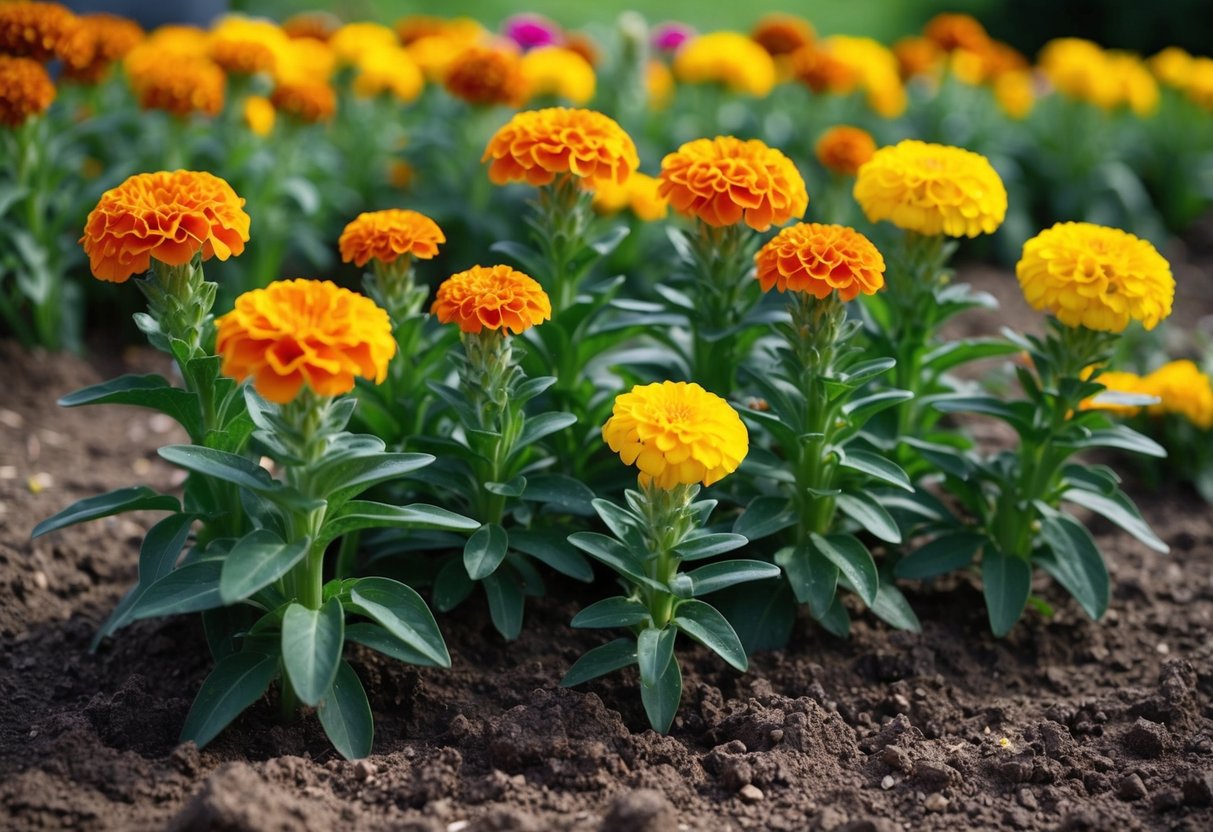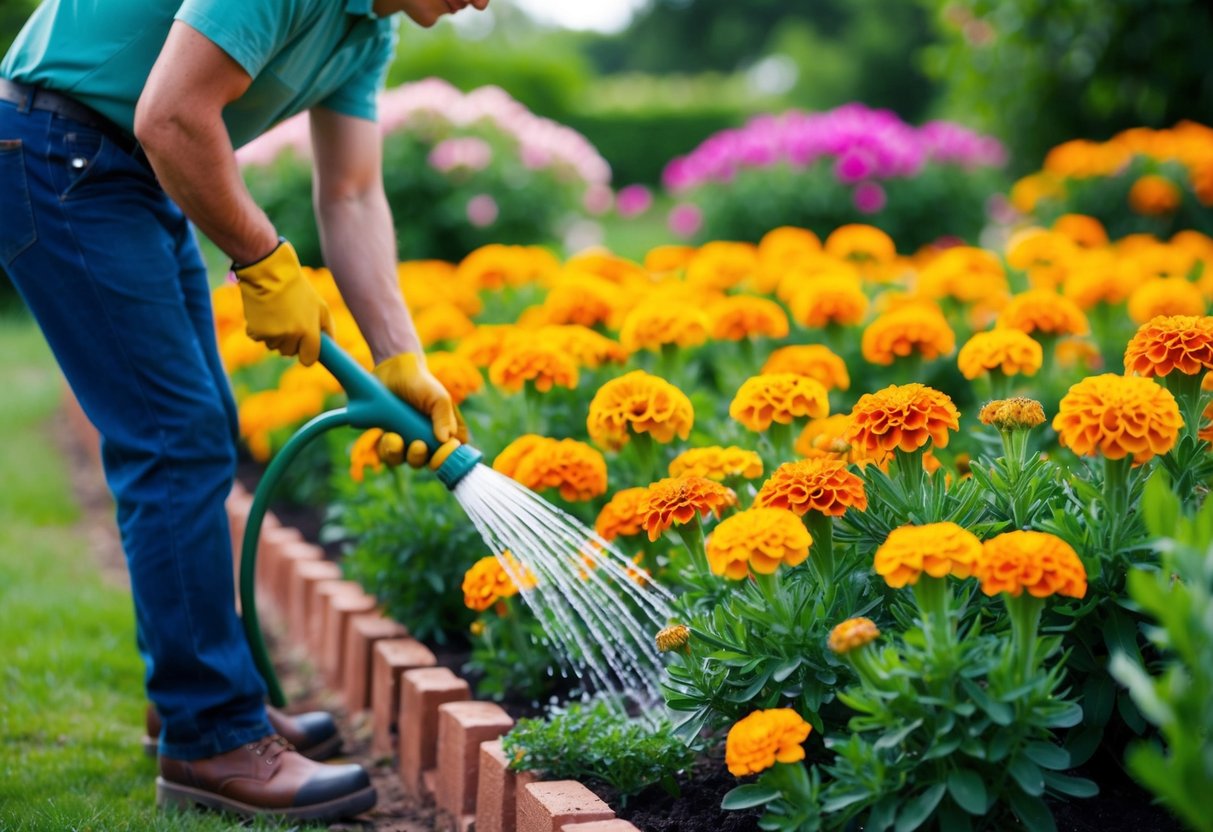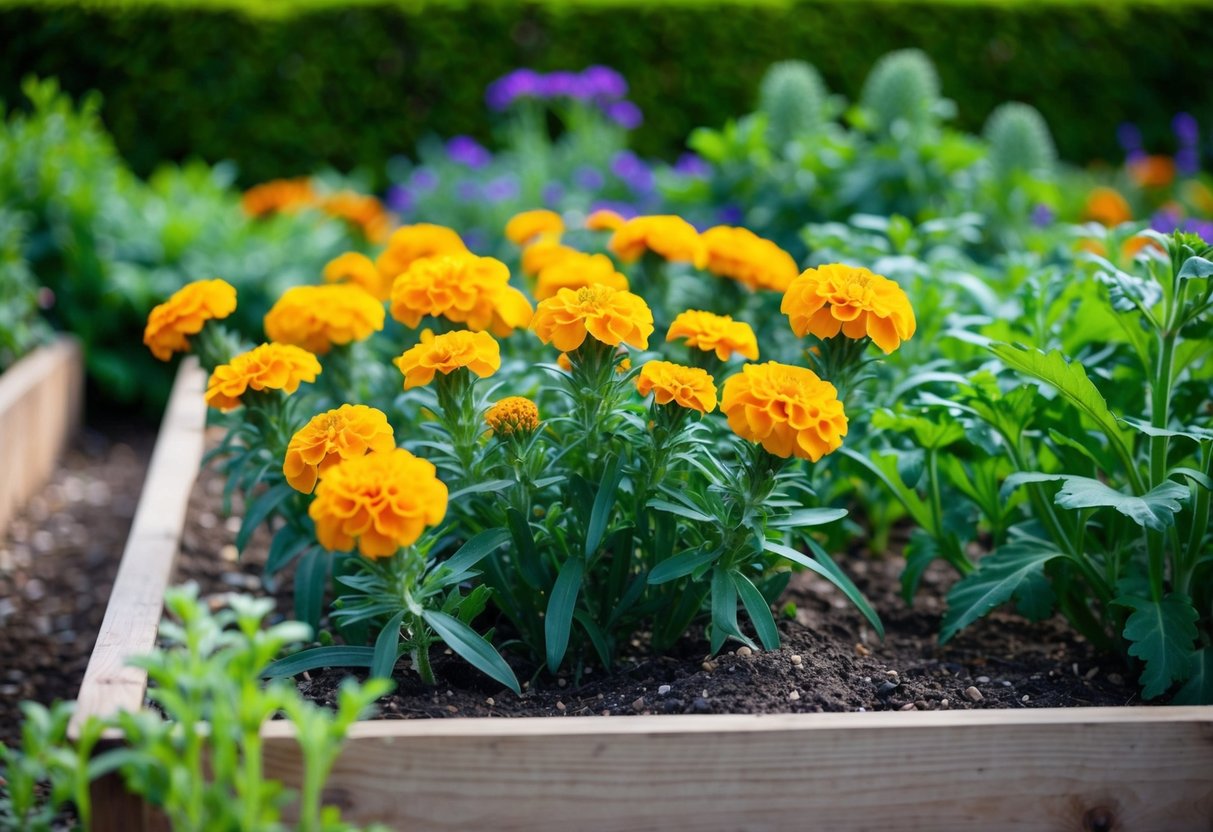How Do You Keep Marigolds Blooming All Summer? Simple Tips for Vibrant Blooms
Marigolds are a wonderful choice for your garden. These annual flowers bring vibrant color and charm to any outdoor space. To keep them blooming all summer, you need to take some easy steps that make a big difference.

Regular deadheading, or removing wilted flowers, encourages your marigolds to continue producing new blooms. This process prevents the plant from going to seed, which can slow down flowering. Consistent watering, especially during dry spells, is also key, but make sure not to overwater as marigolds prefer slightly dry soil conditions.
Fertilizing your marigolds every few weeks with a balanced, water-soluble fertilizer can boost their growth and blooming period. This helps the plants get the nutrients they need for vibrant flowers all summer long. For more tips on how to keep your marigolds blooming big, check out the Old World Garden Farms.
Understanding Marigolds

Marigolds, known for their bright blooms, belong to the asteraceae family. They are popular annuals used to brighten gardens with their intense colors. There are several types of marigolds, each with unique characteristics that make them suitable for various gardening needs.
Types of Marigolds
There are three main types of marigolds: French marigolds, African marigolds, and Signet marigolds. French marigolds (Tagetes patula) are compact, with blossoms in shades of red, yellow, and orange. They are excellent for border plantings. African marigolds (Tagetes erecta), also known as American marigolds, are larger and have robust blooms in yellow and orange. These are great for cut flowers and create stunning garden displays.
Signet marigolds (Tagetes tenuifolia), on the other hand, are known for their delicate, daisy-like flowers and fragrant foliage. They are smaller and work well in rock gardens or as edging plants. It’s essential to choose the right type for your garden’s specific needs, as each has its distinct strengths.
Plant Characteristics
Marigolds are easy-to-grow annuals characterized by their vibrant flowers. They thrive in full sun and can tolerate various soil types, making them versatile garden plants. Their blooms typically come in shades of yellow, orange, and red, adding a splash of color wherever they are planted.
The plant’s foliage is green and feathery, providing a nice contrast to the bold colors of the flowers. Tagetes spp. refer to the marigold genus, which encompasses these popular varieties. It’s important to note that although they share the “marigold” name, calendula officinalis is not a true marigold and differs botanically.
Growing these plants involves regular watering, deadheading faded blooms, and ensuring they have enough sunlight to maintain their health and vigorous blooming all season long.
Cultivation Tips

To keep marigolds blooming all summer, focus on selecting the right seeds and planting them correctly. Ensure they receive the proper sun and soil conditions. Watering and fertilization are crucial to maintaining their vibrant blooms throughout the season.
Seed Selection and Planting
When you’re choosing marigold seeds, opt for ones labeled as annuals. These will give you lush blooms all summer. Plant the seeds after the last frost and ensure the soil temperature is around 70°F. For spacing, French and signet marigolds can be 8-10 inches apart, while African marigolds need more space, around 10-12 inches.
Start seeds indoors using a mixture like vermiculite and compost for better germination. Once seedlings emerge, place them in a sunny spot until they’re ready for transplanting outdoors.
Soil and Sun Requirements
Marigolds thrive best in full sun with at least 6 hours of sunlight daily. If they don’t get enough light, the blooms may reduce. Use a moderately fertile, well-drained soil for planting. You can use commercial potting soil if needed. The ideal soil pH ranges from 6.0 to 7.0, which is slightly acidic to neutral.
Avoid using soils that are too rich in organic matter, as marigolds prefer leaner soils. For containers, choosing a soil-based potting mix can help with drainage.
Watering and Fertilization
Water marigolds regularly but moderately. Provide at least an inch of water per week, and adjust more if the weather is very hot. To avoid damaging the delicate blooms, water at the base instead of overhead. This prevents water from getting trapped in the petals.
Use a liquid fertilizer every 4-6 weeks during the growing season. Marigolds don’t need heavy feeding, but a balanced fertilizer can help them stay healthy. Too much fertilizer can cause excess leaves at the expense of blooms.
By following these cultivation tips, your marigolds should flourish and provide beautiful bursts of gold throughout the summer.
Maintenance for Healthy Blooms

To keep your marigolds robust and blooming all summer, focus on regular care practices. This includes deadheading spent blooms, pruning for fuller growth, and managing pests and diseases that can hinder your plants’ health.
Regular Deadheading
Deadheading is essential for promoting continuous blooming in your marigolds. When you remove spent blooms, you signal the plant to produce more flowers. Use clean scissors to snip off dead flowers just above the next bud or leaf junction. This process not only boosts flower production but also keeps your plant looking tidy. Make it a routine to check for faded blooms every few days. This will ensure that your marigolds focus their energy on creating new buds rather than seeding.
Pruning for Growth
Pruning encourages bushier growth in marigolds. Cut back the stems by about one-third to stimulate new branch development. Look for weak or overly long stems and trim them back to make the plant fuller. Focus on removing any leggy, damaged, or yellowing foliage. Pruning promotes better air circulation, which helps prevent fungal diseases like powdery mildew. Regular pruning also helps your plants use nutrients efficiently, leading to more lush and vibrant blooms.
Managing Pests and Diseases
Pests like aphids, whiteflies, spider mites, and nematodes can harm marigolds. Inspect plants regularly and use insecticidal soap or neem oil to manage infestations. Encourage beneficial insects like ladybugs to naturally reduce pest populations. Ensure good air circulation to prevent fungal diseases, such as powdery mildew. Watch for signs of root rot and avoid overwatering to prevent it. Fungicides can be useful, but always follow instructions to avoid harming beneficial organisms. Keeping plants healthy with proper care makes them more resilient to pests and diseases.
Encouraging Continuous Blooms

To keep your marigolds blooming all summer, focus on a few key practices. First, make a habit of deadheading. By regularly removing faded blooms, you encourage the plant to produce more flowers instead of seeds. This simple act helps direct the plant’s energy back into flowering.
Consistent maintenance is crucial. Ensure your marigolds are getting the right amount of water. Water deeply but less frequently to foster strong roots. This helps support vibrant blooms as the season progresses.
Fertilizing your marigolds periodically is important too. Use a balanced fertilizer every few weeks. This provides essential nutrients that promote continuous blooming. Don’t over-fertilize, as that can lead to excessive leaf growth at the expense of flowers.
Consider attracting pollinators to enhance blooming. Planting marigolds near flowers like lavender or daisies can help bring in bees and butterflies, which aid in pollination and result in more robust flowering.
Marigolds can also self-seed. Allow some flowers to go to seed, and new plants may pop up naturally. This little trick can keep your garden lively with minimal effort.
If you’re starting new marigolds, think about transplanting. Transplanting seedlings into well-prepared soil gives them a strong start and can lead to early and sustained blooming throughout the summer.
Finally, don’t forget the role of good marigold seeds. Plant high-quality seeds or seedlings to ensure healthy plants with a great capacity for blooming.
Companion Planting and Additional Benefits

Marigolds make great companions in your vegetable garden. They help protect your plants by repelling pests. For example, they deter harmful insects from munching on your crops. Carrots can benefit from marigolds, as these flowers deter carrot rust flies and carrot psyllids. Plus, marigolds can make your carrots taste sweeter.
Different types of marigolds offer various benefits. African marigolds grow taller, making them perfect for borders. French marigolds are compact and bushy, great for planting between vegetables. Signet marigolds have a lighter scent and add a splash of color.
Certain herbs and vegetables pair well with marigolds. Consider planting broccoli, cucumbers, squash, and tomatoes nearby. These vegetables benefit from the pest-repelling properties of marigolds. Marigolds are known to attract pollinators, like bees, to your garden, boosting pollination.
Here are some popular companion plants for marigolds:
- Carrots
- Broccoli
- Tomatoes
- Squash
Using marigolds can also help deter larger pests. They keep away deer and rabbits, protecting your garden from being nibbled on. So, having marigolds not only boosts the health of your plants but also adds vibrant colors to your garden.
For more ideas on marigold companions, check out this guide on marigold companion plants.







